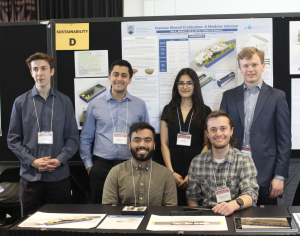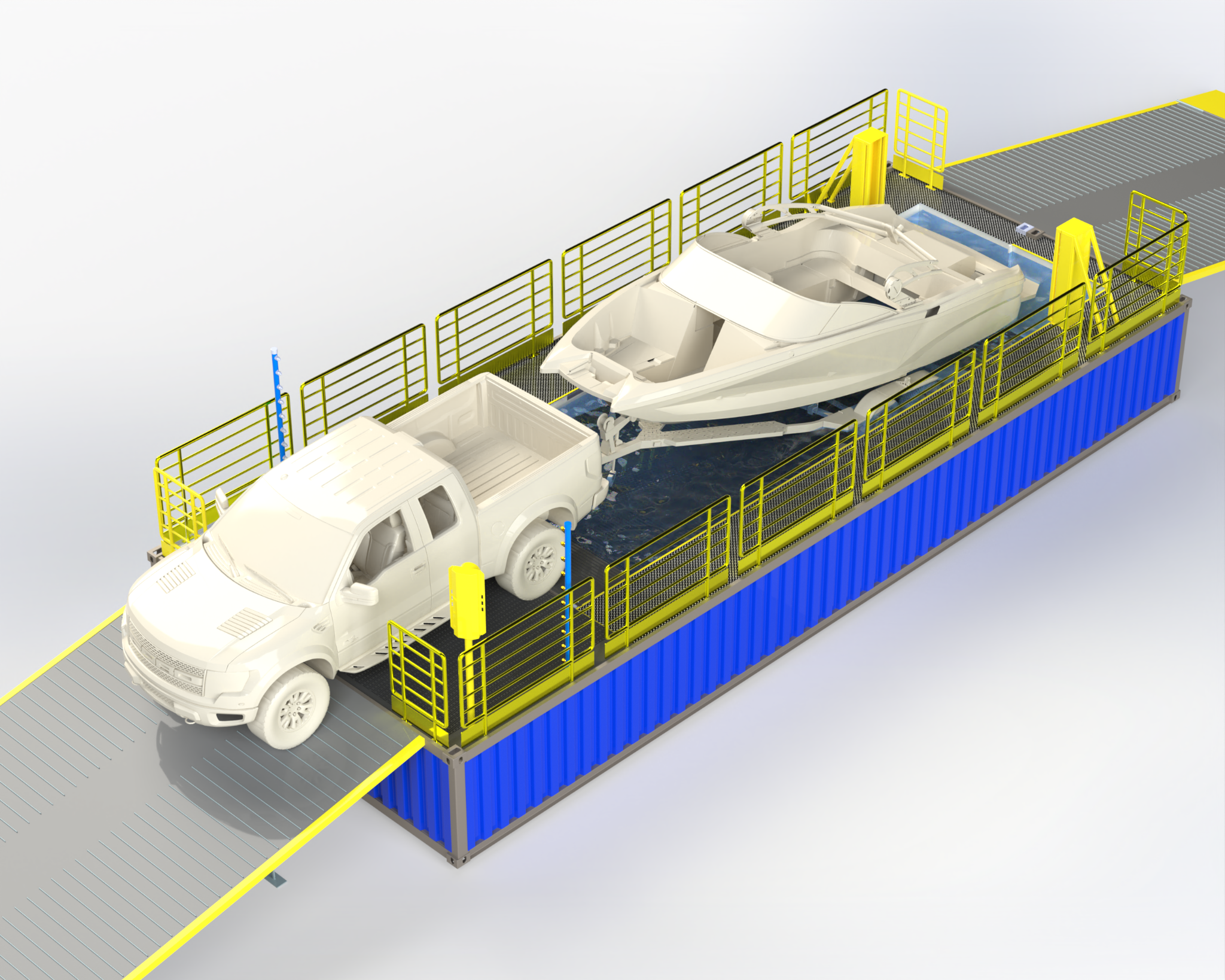UBCO students design system to eradicate invasive mussel species in Canada, US.

Capstone Group Sustainability D (in no particular order): Rex Armor, Nathan Parmar, Pia Brar, Ben Neufeld, Tristan Simmons, Usman Chughtai
A group of engineering students in the Capstone Design Project course with a deep commitment to protecting aquatic ecosystems, led them to partner with Okanagan Basin Water Board – a group that provides leadership and guidance on water issues in the valley. They are now making a real impact in the Okanagan community with their mussel eradication design system.
Capstone Project Title: Invasive Mussel Eradication: A Modular Solution
Student Group: Rex Armor, Nathan Parmar, Pia Brar, Ben Neufeld, Tristan Simmons, Usman Chughtai
Community Partner: Okanagan Basin Water Board
What would be the “elevator pitch” for your project?
Zebra and Quagga Mussels (ZQM) are highly invasive species that pose significant threats to British Columbia’s native ecosystems. While currently absent from western Canada, established populations in eastern provinces and regions south of the Canadian border create an urgent need for preventive action.
In response, our team of six engineering students collaborated with the Okanagan Basin Water Board (OBWB) to design a comprehensive, transportable eradication system as part of our capstone project. The resulting Modular Mussel Eradication Station (MMES) efficiently disinfects recreational watercraft up to 30 feet long in just 10 minutes. The MMES combines two proven eradication techniques: submersion in 60°C water for five minutes, followed by an exterior high-pressure spray at 1600 psi with water heated to 80°C.
The modular nature of the MMES sets it apart from alternative solutions, as its design compactly fits within a standard 40-foot by 8-foot shipping container. This portability facilitates convenient transportation and rapid deployment at checkpoints, particularly if ZQM are identified within provincial borders.

The eradication system rendering, pictured above.
What inspired you to pursue this particular project?
Our team is deeply committed to protecting the beauty and health of Okanagan Lake and the many other pristine lakes throughout British Columbia. As residents and active lake users ourselves, we have a personal connection to these waters and feel a strong responsibility to preserve their natural state. Several of our members are avid boaters who regularly enjoy spending time on Okanagan Lake, making this issue particularly meaningful. Ensuring our lakes remain free of invasive mussels is crucial—not only to safeguard our cherished recreational activities but also to protect the local ecosystem and vital water infrastructure. By addressing this threat proactively, we aim to present a solution that could preserve the lakes we love for generations to come.
Ensuring our lakes remain free of invasive mussels is crucial—not only to safeguard our cherished recreational activities but also to protect the local ecosystem and vital water infrastructure. By addressing this threat proactively, we aim to present a solution that could preserve the lakes we love for generations to come.
What was the biggest challenge you faced while working on your project?
The biggest challenge our team faced during this project was pivoting from an initial focus on mussel detection toward developing an eradication solution. As we delved deeper into research, we discovered that creating an effective detection system—particularly one capable of identifying invasive mussels at their microscopic larval stage—would exceed the scope and technical capabilities of our engineering team. Recognizing this, we made a strategic decision to shift our efforts toward designing a reliable eradication system. Although our client initially sought a detection-based solution, this pivot allowed us to deliver a practical, achievable, and impactful approach to protecting Okanagan Lake.
What’s the funniest or most unexpected thing that happened while working on your project?
One of the funniest moments during our project came when we realized that our client essentially wanted us to create an “artificial dog nose.” Currently, trained dogs are being successfully used to detect invasive mussels on watercraft through scent. As engineering students, the idea of replicating a dog’s highly sensitive nose seemed both fascinating and amusingly ambitious. While we agreed it would be incredibly innovative—and frankly quite entertaining—to develop such a device, we quickly concluded it was probably beyond the realm of feasibility for our project.
What excited you the most about your project?
We are excited by the potential that one day our device could be manufactured and put into practical use, protecting lakes throughout BC and beyond. Additionally, we’re hopeful that the knowledge and research gained through this project could help inspire solutions for other invasive species challenges. Who knows—perhaps our work will serve as a stepping stone toward broader environmental innovations in the future!
We are excited by the potential that one day our device could be manufactured and put into practical use, protecting lakes throughout BC and beyond. Additionally, we’re hopeful that the knowledge and research gained through this project could help inspire solutions for other invasive species challenges.
What is the most interesting/surprising thing you learned while working on your project?
The most surprising thing we learned when working on this project is that only two dogs in Canada are currently trained to detect these invasive mussels by scent.
What skills or knowledge did you gain during Capstone that you think will be the most useful/surprise people when you enter the workforce?
The skills of effective communication and collaborative problem-solving abilities will be the most useful in the workforce and are exactly what is needed in order to complete a capstone project.
What’s one piece of advice you’d give to future Capstone students that you wish you had known at the start?
The engineering design process is far more nuanced than simply rushing toward an immediate solution. Really take your time at the start of the project to really understand what the problem is before diving into potential solutions.
What does the future hold for your project? If you had unlimited resources and time, what would you do to take it to the next level?
Taking our project to the next level means manufacturing our Modular Mussel Eradication Station and testing it across British Columbia. We’re eager to see how it performs in real-world conditions and to refine its design and user-friendliness based on those insights.
About the Capstone Design Project course: Students in their final year of the Bachelor of Applied Science Program at UBC School of Engineering participate in the Capstone: Engineering Design Project course – ENGR 499. Students use the knowledge and expertise accquired throughout their undergraduate degree to solve real-world engineering problems presented by industry partners, UBC faculty researchers, or the students themselves. It is also an opportunity for students to work with clients, navigate team dynamics and face the everyday challenges that occur in the industry. At the end of the year, students display their projects at the Capstone Design Project Showcase & Competition where they are judged by a select group of engineering industry leaders and UBCO faculty. To celebrate their innovation, we are highlighting some of these interesting projects from the 2024-2025 class!
Learn more about Capstone and how to submit a project proposal for 2025-2026!